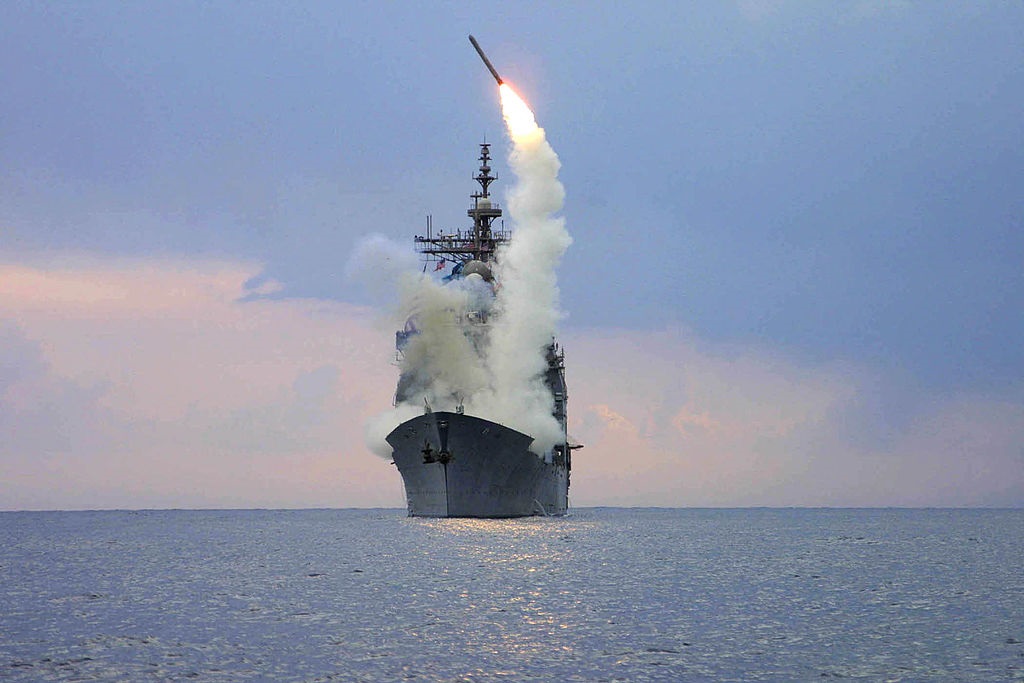
The navy is under-gunned for the strategic circumstances Australia faces. For years, commentators have criticised its existing and planned platforms for possessing too few missile cells. Many of them have suggested that the best remedy is to commission a significant number of small warships or corvettes. They argue that small, fast, manoeuvrable ships would be effective in the narrow straits and shallow waters on Australia’s northern approaches. Other experts question this assertion. Despite the unsettled nature of the debate, it is believed that the surface fleet review about to be released by the government endorses a fleet of corvettes. But, historically such ships have not delivered the potent strategic impact Australia needs.
This is evident if we compare Australia’s experience in the two world wars. In 1914, at the onset of World War I, the centrepiece of the Australian fleet was the battlecruiser HMAS Australia. It was essentially a lightly armoured dreadnought–the tier 1 combatant of the time. Its mere presence deterred German naval forces in the Pacific from carrying out their war orders—to raid Australian shipments to Britain of food, gold, and wool. The German commander, Vice-Admiral Von Spee knew that Australia alone outclassed his squadron which did not possess a comparable warship. If he encountered the battlecruiser, his ships would be quickly overwhelmed, and his men fruitlessly sacrificed. He chose to evacuate the theatre, charting a course across the Pacific in the hope of getting home. His squadron was eventually destroyed at the Battle of the Falkland Islands by the British battlecruisers Invincible and Inflexible—confirming that Spee’s fear of Australia had been very much warranted.
By contrast, Australia possessed no significant deterrent when war broke out in the Pacific in 1941. HMAS Australia had been scuttled as per the Washington Naval Treaty. The RAN was comprised of two heavy cruisers, some modern and some obsolete light cruisers, and some old destroyers. Most of which were assisting the British navy in the Mediterranean. At this stage, the air force was under-developed. So, the Imperial Japanese Navy could enter Australian waters with relative impunity. Its incursions into the South Pacific and north-east India Ocean are too numerous to recount. Ultimately, Australia relied upon American naval power to blunt Japan’s southern offensive at the Battle of the Coral Sea and at the Solomon Islands.
These examples demonstrate that a first-class navy, with an appropriate number of tier 1 combatants can deny the waters surrounding Australia to adversaries. A second-class navy cannot. Although technology has changed, I am convinced that this lesson of naval history still applies. Today, the key issue is the cost-effective deployment of lethal anti-ship missiles across Australia’s north to manifest the strategy of denial recommended by the defence strategic review (DSR). Here, corvettes fall down in terms of missile-carrying capacity. I believe Australia needs missile cruisers.
As warships grow in size, they become more efficient missile-carrying platforms. The table below compares the tonnage, crew numbers, and missile cells of leading corvette, destroyer, and cruiser designs. Probably the best armed corvette in service today is the Israeli Sa’ar 6—a derivative of the German K130 Braunschweig class. If the government chooses to commission corvettes for the RAN, they will have to be even more potent to achieve the missile-carrying efficiency of its existing air warfare destroyers (AWDs). However, the AWDs are only equivalent to America’s tier 2 combatant, the new Constellation class frigate. The gold standard is South Korea’s Sejong the Great class destroyer or America’s retiring Ticonderoga class cruiser which requires only 2.7 crew per-missile cell and just 78.7 tons per missile.
| Class | Type | Missile Cells | Crew | Displacement (t) | Crew/ Missile | Tons/ Missile |
| Braunschweig | Corvette | 4 | 65 | 1840 | 16.3 | 460 |
| Sa’ar 6 | Corvette | 16 | 70 | 1900 | 4.4 | 118.8 |
| Constellation | Frigate | 48 | 200 | 7291 | 4.2 | 151.9 |
| AWD | Destroyer | 48 | 186 | 7700 | 3.9 | 160.4 |
| Arleigh Burke | Destroyer | 96 | 300 | 9500 | 3.1 | 100 |
| Sejong the Great | Destroyer | 128 | 300 | 10600 | 2.3 | 82.8 |
| Ticonderoga | Cruiser | 122 | 330 | 9600 | 2.7 | 78.7 |
These metrics are important because naval personnel are a scarce resource, especially for a medium sized country like Australia. Cost is always a factor and tonnage gives a rough indication of price. Consider that the RAN would have to put three Sa’ar type corvettes to sea to equal the number of missiles deployed aboard one AWD. This would require 210 sailors–24 more than one AWD. For argument’s sake, consider that it would take eight Sa’ar types to match the missile capacity of a Ticonderoga, requiring 560 sailors—230 more than a Ticonderoga. This may be why countries like South Korea and Japan are contemplating ‘arsenal ships’ for ballistic missile defence and conventional deterrence. If armed with Block V Tomahawk missiles which have a range of 1500km and an anti-ship capability, a fleet of missile cruisers would cost-effectively provide Australia with missile dominance over its northern approaches.
Detractors will likely argue that large ships are too vulnerable in the age of space-based surveillance and missile warfare. This is far from certain. First, large warships are inherently more survivable because they have space for defensive systems whose effectiveness is currently being demonstrated in the Red Sea. The cruisers would be part of a ‘system-of-systems’ and a taskforce with smaller assets providing an outer layer of protection and helping to detect, identify, and target enemy combatants. Next to the AUKUS submarines, equipping the RAN with missile cruisers would be the best possible enhancement of Australia’s defences in the short to medium term.

